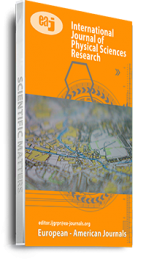Rainfall variability has become a topical concern largely because of its impacts on natural and human systems. Rainfall data spanning a period of 30 years (1988-2018) for four stations in northwestern Nigeria (Minjibir, Lere, Musawa and Illella) were used to determine the trend in annual rainfall for the region. Five-year running mean was calculated for annual rainfall for the selected stations. The decadal means were compared with the long-term mean. Evidence from the four stations considered shows that there is significant increase in annual rainfall amount in the last decade of the study. It means, therefore, that we are experiencing wetter conditions in the Sudano-sahelian zone of Nigeria. The findings further revealed that the region is becoming wetter in terms of the climatic elements (rainfall and temperature). It further shows that there is a vice versa between the selected cereals crops and the weather parameters (High climatic variables produce low yield of selected cereals crops). The study recommended that more emphasis on dissemination of weather variability and changes through the mass media is highly needed; there is need for extension agents, policy makers and researchers to try and get farmers to effectively adapt to climate change.
Keywords: agriculture; climate change; rainfall; temperature, variability

